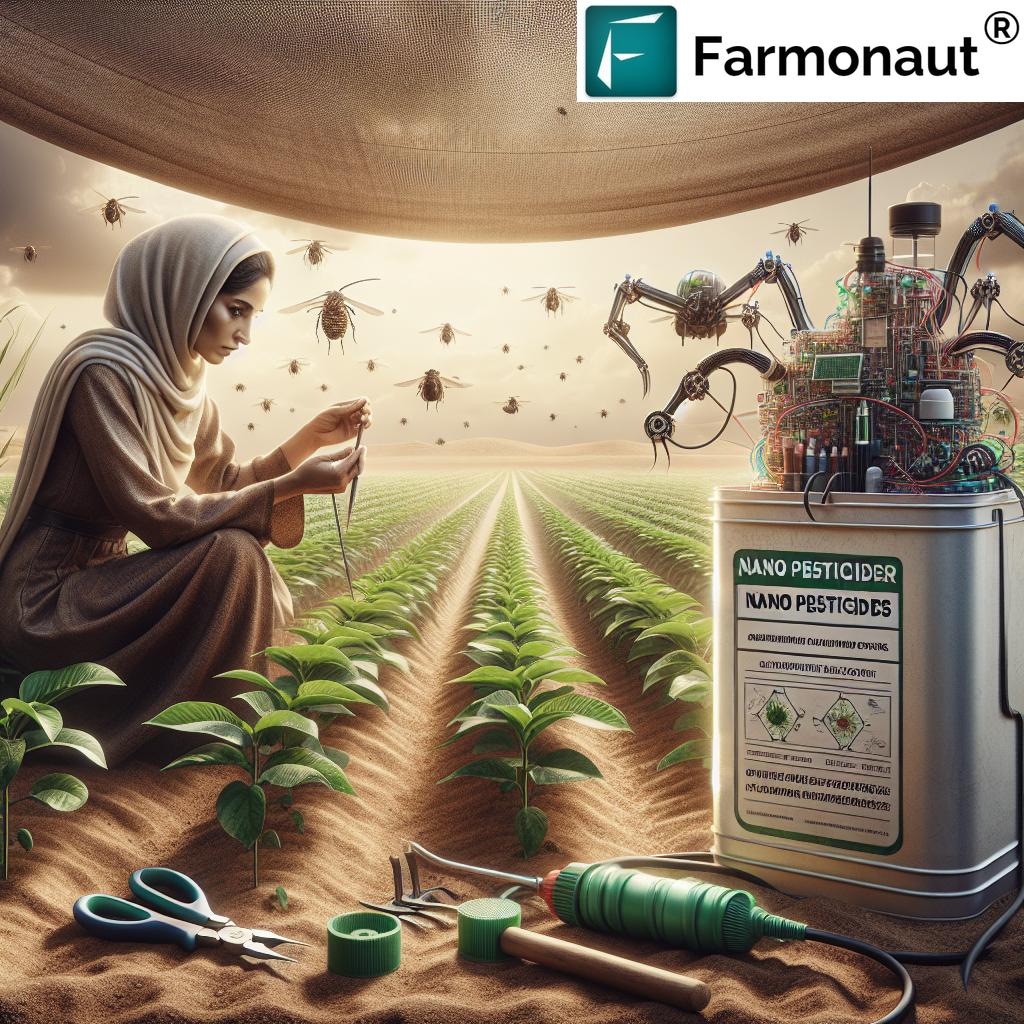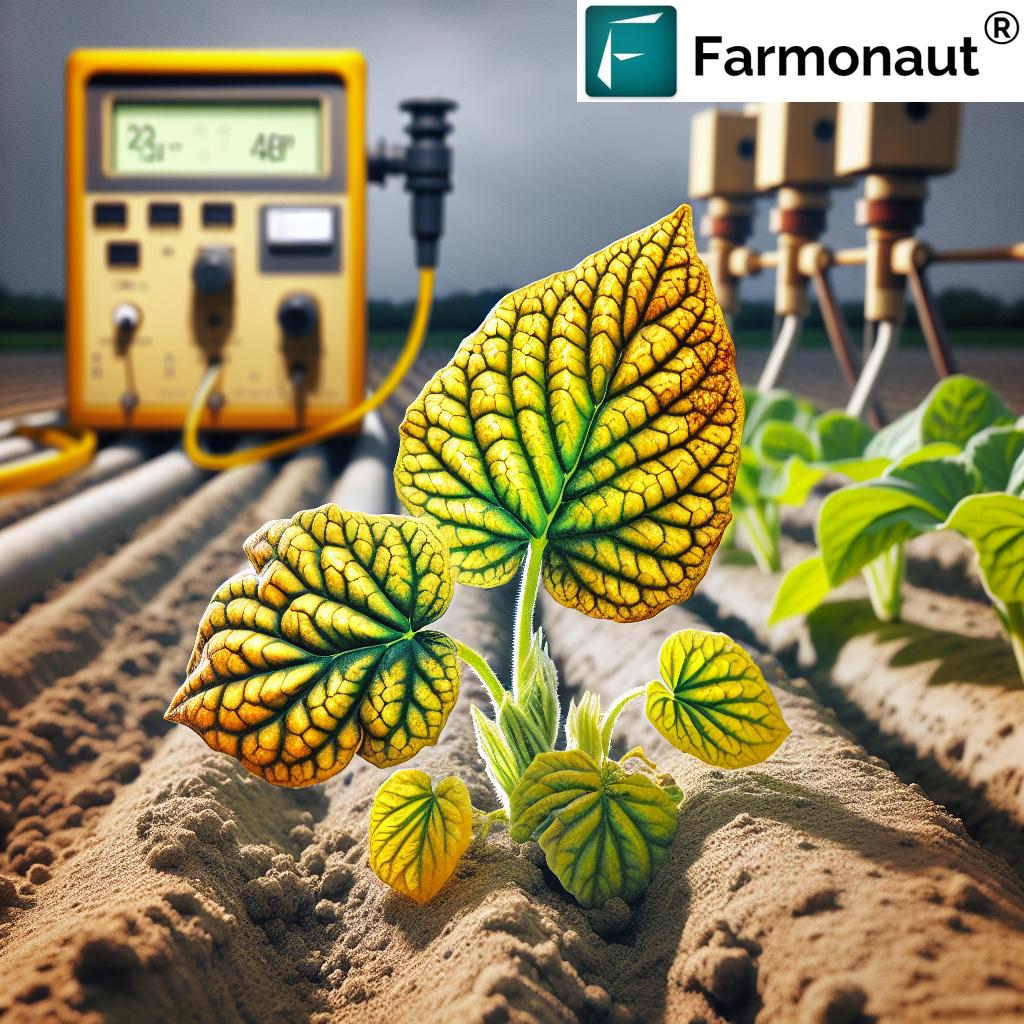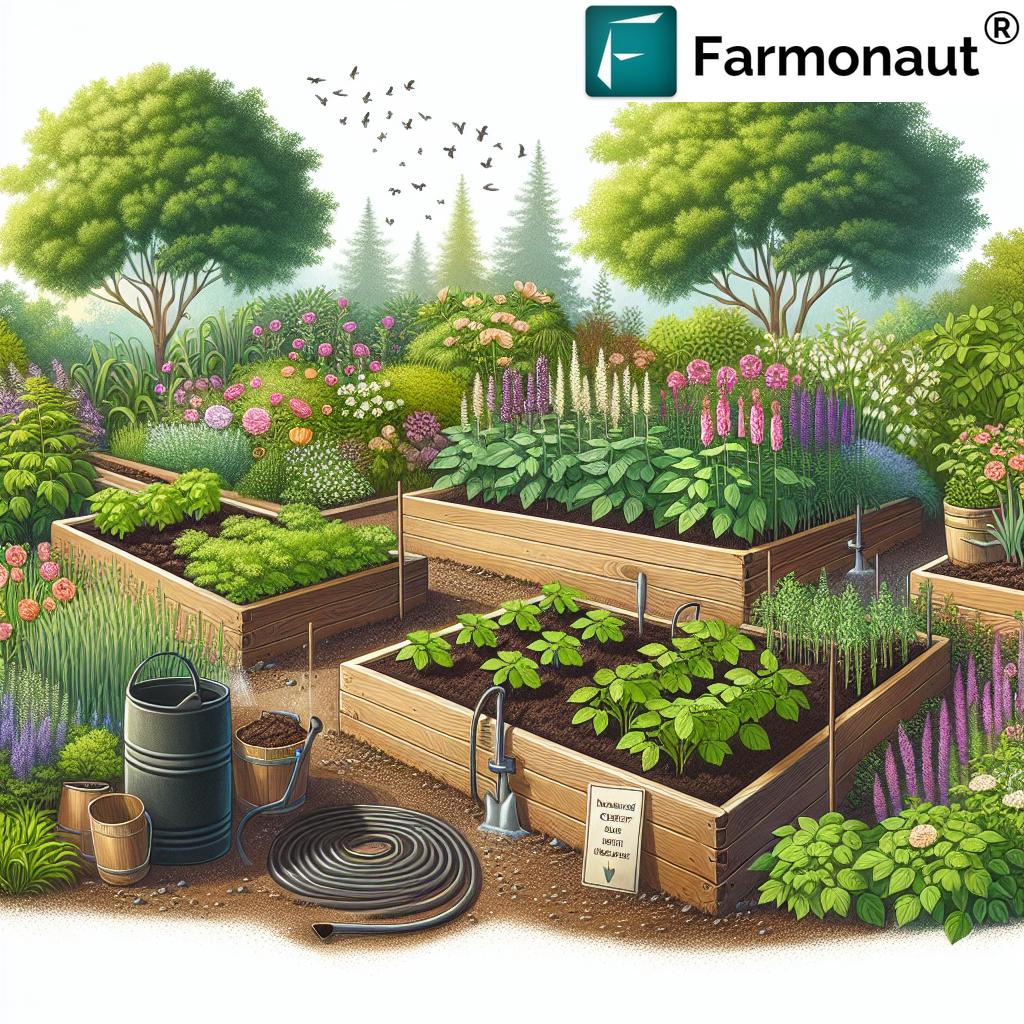Eco Friendly Insect Control: 7 Shocking Farm Hacks!
In today’s quest for eco-friendly insect control, we face a crucial challenge. How do we manage pest populations that threaten our crops, livelihoods, and ecosystems—without compromising the health of our environment, human communities, and future generations? The answer is a powerful transition from traditional chemical pesticides toward a spectrum of integrated, natural, and sustainable pest management strategies.
Join us as we unveil 7 shocking farm hacks for sustainable, eco-friendly pest control, each designed to integrate seamlessly into modern agriculture while reducing the pesticide impact on the environment. These methods help keep pest populations in check, improve crop health and yield, and safeguard the delicate ecological balance required for long-term farming success.
“Over 500 beneficial insect species are used worldwide in eco-friendly pest control, reducing chemical pesticide use by 30%.”
1. Integrated Pest Management (IPM): The Cornerstone of Eco-Friendly Insect Control
When it comes to sustainable insect control and truly eco-friendly pest management, the most essential strategy is Integrated Pest Management (IPM). IPM is a holistic, rational, and scientifically grounded approach that combines multiple pest control strategies—cultural, biological, mechanical, and minimal chemical solutions—to manage pests in an economically and ecologically sound manner.
What Makes IPM the Gold Standard?
- Monitoring & Identification: We regularly inspect our crops and fields, accurately identify pest species and their abundance, and use farm management tools for thorough monitoring.
- Setting Action Thresholds: Action is only taken when pest populations reach levels (thresholds) likely to cause economic damage—avoiding unnecessary interventions.
- Cultural Practices: Preventive methods such as crop rotation, selecting pest-resistant varieties, and optimizing planting schedules disrupt pest establishment and development.
- Biological Controls: By utilizing natural enemies of pests (predators, parasitoids, pathogens), we reduce pest numbers and preserve beneficial insect populations.
- Mechanical & Physical Controls: We employ traps, nets, barriers, and manual removal to manage pest populations effectively.
- Chemical Controls: Eco-friendly and organic pesticides are a last resort, selected for minimal environmental impact and targeted action.
IPM seeks to maintain pest populations at acceptable levels while preserving the ecological balance and minimizing environmental harm. This is a continuous process, relying on data generation, regular analysis, and precise intervention—making it a proven way to reduce pesticide impact on the environment.
For those managing extensive farm operations, Farmonaut’s Large Scale Farm Management solutions offer high-resolution satellite-based crop health monitoring and real-time alerts. This enables more effective pest monitoring and targeted actions, perfectly supporting your IPM strategy.
Key Advantages of IPM in Sustainable Insect Control
- Reduces chemical pesticide reliance and associated risks
- Lowers input costs through precise intervention
- Promotes biodiversity and maintains the population of beneficial insects
- Decreases adverse effects like pest resistance, water contamination, and non-target organism impact
- Improves crop yield, soil health, and environmental sustainability
2. Biological Control: Harnessing Nature’s Predators for Agricultural Pest Management
One of the most effective eco-friendly pest control strategies is leveraging Biological Pest Control Methods. This involves the deliberate use of living organisms—predators, parasitoids, and pathogens—to suppress and manage pest populations in our crops.
Main Forms of Biological Control in Agriculture
- Predators:
- Lady beetles: Renowned for preying on aphids and other soft-bodied insects.
- Spiders: Naturally hunt and consume a wide variety of pest species.
- Lacewings and hoverflies: Effective against pests in vegetable and fruit crops.
- Parasitoids: Wasps and flies lay eggs in or on pest hosts (such as caterpillars), leading to pest death.
- Pathogens: Beneficial microorganisms—bacteria, fungi, or viruses—infect and kill target pests without harming beneficial insects or crops. For example, Bacillus thuringiensis (Bt) is commonly used against caterpillars.
By integrating biological pest control methods into our farm management systems, we dramatically reduce our reliance on chemical pesticides and promote the health of beneficial and non-target organisms. Importantly, this approach preserves ecological balance, decreases resistance development, and supports sustainable agriculture in the long run.
To maximize the benefits of biological control, Farmonaut’s Crop & Plantation Advisory platform provides AI-driven recommendations based on real-time crop and pest status. Access science-backed insights about when and how to introduce beneficial insects and microorganisms to ensure effective control of pest populations.
Why Biological Controls Matter in Sustainable Farming
- Targets only pest insects, minimizing impact on beneficial species
- Reduces selection pressure for resistance
- Compatible with organic and IPM systems
- Safe for human health, pollinators, and the surrounding environment
3. Cultural Practices in Agriculture: Disrupting Pest Life Cycles
Cultural practices in agriculture are deliberate, preventive methods designed to make the farm environment less favourable to pest establishment and development. These proven strategies break pest cycles, reduce infestation risk, and work harmoniously with our overall sustainable crop management system.
Essential Cultural Practices for Pest Control
- Crop Rotation: Alternating crops by season hampers the build-up of pest populations targeting specific plant species. For example, rotating between legumes and cereals prevents the continuous establishment of insect pests and soil-borne pathogens.
- Intercropping: Growing different crops together confuses pests and attracts beneficial insects such as parasitoid wasps and predators.
- Trap Cropping: “Sacrificial” crops, like marigolds or mustard, are planted to lure pests away from the main crop. These can be periodically destroyed to remove pests from the farm environment altogether.
- Push–Pull Strategy: Combining “push” (pest-repellent) plants with “pull” (pest-attracting) plants surrounds main crops with layered protection. For instance, Desmodium between maize rows repels stem borers, while Napier grass around the field perimeter attracts and traps them.
- Sanitation: Timely removal of crop residues, weeds, and volunteer plants reduces the shelter and breeding grounds for pests.
- Optimal Planting Dates: Adjusting sowing and harvesting timelines helps escape peak pest emergence, reducing population pressures naturally.
Cultural practices are the backbone of integrated pest management because they can be easily combined with other control methods, require minimal external inputs, and foster an environment where beneficial insects can thrive. These approaches also support soil health and long-term agricultural sustainability.
Cultural Practice Hacks At a Glance
- Cost-effective with minimal environmental impact
- Work synergistically with organic pest management, biological, and mechanical controls
- Improve ecological balance and reduce pest resurgence
- Recommended as standard preventive measures for every sustainable farm
4. Organic Pest Management: Natural Pesticides for Crops
Among the most popular eco-friendly pest control strategies are natural pesticides for crops. These substances, derived from plants or minerals, are typically less toxic to humans, pets, and wildlife, while remaining effective against a variety of pests.
Best Organic Pesticide Options
- Neem Oil: Extracted from neem tree seeds, this oil interferes with insect hormonal systems, stunting growth and preventing reproduction (especially effective against sucking insects and caterpillars).
- Diatomaceous Earth: Composed of fossilized algae, this powder abrades and dehydrates contact pests like ants, beetles, and slugs without harming earthworms or pollinators.
- Iron Phosphate: Specifically targets slugs and snails, causing them to stop feeding, with no effect on non-target species.
- Soap Sprays: Safe liquid soaps disrupt the membranes of soft-bodied pests; biodegradable and easy to apply as a spray.
- Garlic, Chilli, and Essential Oils: Botanical extracts that deter or kill insects, suitable for localized outbreaks and rapid-acting protection.
Organic pest management is vital in transitioning away from hazardous chemical pesticides. When used as part of a holistic approach, these eco-friendly methods protect beneficial insects and help maintain soil, water, and ecological health. Always follow application guidelines to ensure maximal efficacy and safety.
Using organic and natural pest control fits seamlessly with Farmonaut’s Carbon Footprinting tool, which enables you to track and reduce the carbon footprint of your farming system. By minimizing chemical pesticide use, you contribute to a more resilient and environmentally sustainable operation.
Tips for Effective Organic Pest Management
- Rotate organic treatments to minimize resistance and adaptability in pest populations
- Combine targeted application with monitoring for best results
- Pair with cultural and biological controls within your IPM framework
“Integrated Pest Management (IPM) can cut pesticide application by up to 50%, promoting healthier soil and water ecosystems.”
5. Nanotechnology in Pest Control: The Future is Nano
Innovations in nanotechnology in pest control offer farmers a high-tech approach to minimize the environmental risks and improve the effectiveness of pest management. Here, we utilize nano pesticides and nano carriers for precisely targeted delivery and action.
How Does Nanotechnology Help Control Pests?
- Nano-Encapsulated Pesticides: Pesticides are enclosed within special nanoparticles that gradually release the active ingredient, reducing the need for repeated applications while protecting non-target species. This means we use less pesticide, more efficiently and safely.
- pH-Sensitive Nanocarriers: These nanocarriers remain inert in neutral environments but are activated within the alkaline gut of pests (such as caterpillars or beetles)—dramatically minimizing negative impact on beneficial insects, plants, and soil life.
- Smart Delivery Systems: Nanotechnology allows for the development of customized release profiles, targeting only the species and stages when intervention is essential.
While nanotechnology in pest control is still evolving, it’s poised to revolutionize sustainable agriculture by further reducing pesticide contamination of water and soil, limiting health risks, and overcoming traditional limitations of pest management methods.
Advantages & Considerations
- Significantly reduce pesticide impact on environment
- Lower cost per unit of pest suppression
- Better protection of beneficial and non-target organisms
- Requires careful environmental risk assessment prior to large-scale use
6. Sterile Insect Technique (SIT): Peaceful Population Control
Among the ground-breaking innovations in sustainable insect control is the Sterile Insect Technique (SIT). Here, we rear and release large numbers of sterile insects (typically male flies or moths) into infested areas—where they mate with wild females, resulting in no offspring and a gradual decline in pest populations.
Where is SIT Effective?
- Has been successfully used to control screw-worm fly, Mediterranean fruit fly, and other major agricultural pests globally.
- Particularly suitable for high-value fruit and vegetable crops threatened by specific insect species.
SIT presents several undeniable benefits—it’s species-specific, doesn’t introduce toxic residues, and preserves beneficial insect populations. However, it may require coordinated, landscape-level action for best results, making it ideal for community or regional pest management programs.
Why SIT is a Shocking Hack
- Zero chemical input required; minimal environmental impact
- No effect on non-target species or biodiversity
- Long-term pest suppression and resistance management
- Can help eliminate pest species entirely in enclosed settings
7. Mechanical & Physical Controls: Hands-On Insect Management
Sometimes, the most effective sustainable insect control strategies are also the simplest. Mechanical and physical controls focus on manual or physical interventions to manage pest presence, numbers, and distribution—without any chemical use.
Popular Mechanical Hacks
- Physical Barriers: Row covers, insect-proof nets, sticky bands, and fine mesh screens keep pests away from crops, especially in high-value vegetable or fruit systems.
- Light Traps and Sticky Traps: Attract and capture pests such as flies and moths using lights or adhesive surfaces.
- Hand Picking: In smaller operations, directly removing pests, eggs, or infested plant parts can dramatically reduce pest populations before they escalate.
- Soil Solarization: Covering soil with clear plastic during hot weather to kill soil-borne pests through increased temperature.
Mechanical and physical controls are especially effective as a first line of defence or when used in tandem with IPM, biological, and organic pest management. These low-input solutions are perfect for organic farms, kitchen gardens, and fields where chemical interventions are not desired.
Key Benefits
- Immediate results, highly targeted, and avoids pesticide residues
- Offers flexibility and can be quickly deployed against new outbreaks
- Essential for inclusion in any sustainable, eco-friendly pest control program
Comparison Table: Eco-Friendly Pest Control Methods
Use this at-a-glance table to compare the most impactful sustainable pest management hacks discussed above.
| Hack/Method | Target Insect(s) | Estimated Effectiveness (%) | Environmental Impact | Estimated Cost ($/acre) |
|---|---|---|---|---|
| Integrated Pest Management (IPM) | All major pest insects | 65–95 | Low | 10–40 (mainly monitoring) |
| Biological Control (Predators, Parasitoids, Pathogens) | Aphids, caterpillars, whiteflies, beetles | 60–90 | Low | 20–60 (varies by agent) |
| Cultural Practices (Rotation, Trap Cropping, Push–Pull) | Soil & above-ground insects | 40–75 | Very Low | 5–25 (labour and seeds) |
| Organic Pesticides (Neem, Diatomaceous Earth, Iron Phosphate) | Aphids, mites, beetles, slugs, snails | 55–85 | Medium-Low | 15–120 (product dependent) |
| Nanotechnology/Nano Pesticides | Wide range: insects, mites | 70–95 | Low-Medium | 40–150 (currently higher) |
| Sterile Insect Technique (SIT) | Fruit flies, moths, regional pests | 70–99 (when scaled) | Very Low | 25–110 (dependent on scale) |
| Mechanical & Physical Controls | All surface & flying insects | 50–75 | Very Low | 10–50 (materials and labour) |
How Farmonaut Empowers Sustainable Insect Control
Eco-friendly pest control isn’t just a philosophy—it’s a data-driven future, increasingly empowered by smart agricultural technologies. At Farmonaut, we believe that precision and real-time information are game changers in pest management. Here’s how our solutions support your eco-friendly, sustainable insect control goals:
-
Satellite-Based Crop Health Monitoring:
Our platform provides actionable insights into crop health, pest outbreaks, and stress zones using satellite data—early detection means targeted, minimal intervention. Reduce costs and pesticide overuse by tracking problems before they escalate. -
AI-driven Advisory:
Jeevn AI Advisory System delivers timely recommendations on pest thresholds, management strategies, and optimal action timing (including spray advisories, rotation reminders, and cultural practice alerts). -
Blockchain-Based Product Traceability:
Guarantee the authenticity and eco-friendliness of your produce with Farmonaut’s Traceability Technology. Share pest management transparency with consumers for higher trust and value. -
Resource & Fleet Management:
Fleet & Resource Management tools help you optimize spray schedules, staff allocation, and machinery usage—further reducing resource wastage and pest management costs. -
Carbon Footprinting:
As you shift to eco-friendly practices, Farmonaut’s Carbon Footprinting helps you measure and report your positive impact—boosting brand value and compliance.
Our flexible API and developer resources also enable you to integrate crop health and pest monitoring directly into your own farming or agribusiness platforms.
Frequently Asked Questions (FAQ)
What is the most eco-friendly pest control method?
There’s no single “most eco-friendly” solution—rather, integrating multiple strategies (IPM, biological, cultural, and physical controls) delivers the best results while minimizing environmental harm and pesticide residues.
How does integrated pest management (IPM) reduce pesticide impact?
IPM relies on regular monitoring, threshold-based action, and preference for natural, targeted interventions. By only applying chemical (or organic) pesticides when absolutely necessary, we dramatically reduce contamination of water, soil, and non-target organisms.
Are “organic” pesticides always non-toxic and safe for the environment?
While organic pesticides are generally safer and biodegradable, overuse can still harm beneficial insects and lead to minor environmental impacts. Always use them as part of a balanced, integrated management plan for best results.
Can technology improve our pest monitoring and decision-making?
Absolutely. Platforms like Farmonaut provide satellite-based crop health analytics and real-time advisories, allowing precise pest interventions that are timely, targeted, and less resource-intensive.
How can I ensure my farm stays ahead of pest outbreaks?
Combine regular field scouting with digital crop monitoring, adopt preventive cultural and biological practices, and only intervene above established thresholds. Technology platforms and real-time APIs can make this process more efficient and transparent.
Is the sterile insect technique (SIT) practical for small farms?
SIT generally suits regional/community programs, especially for fruit fly or moth infestations. For small farms, combining IPM, biological, and physical controls is usually more accessible and effective.
Conclusion: Building a Healthier, Greener Farm Future
As stewards of the land, it’s our duty to manage pest populations with wisdom and foresight. By harnessing eco-friendly pest control strategies—integrated pest management, biological pest control methods, innovative nano pesticides, preventive cultural practices, and advanced technology platforms like Farmonaut—we foster sustainable agriculture, preserve biodiversity, and ensure bountiful harvests for generations to come.
Let’s commit to minimizing harm, maximizing yield, and working with nature—not against it.













